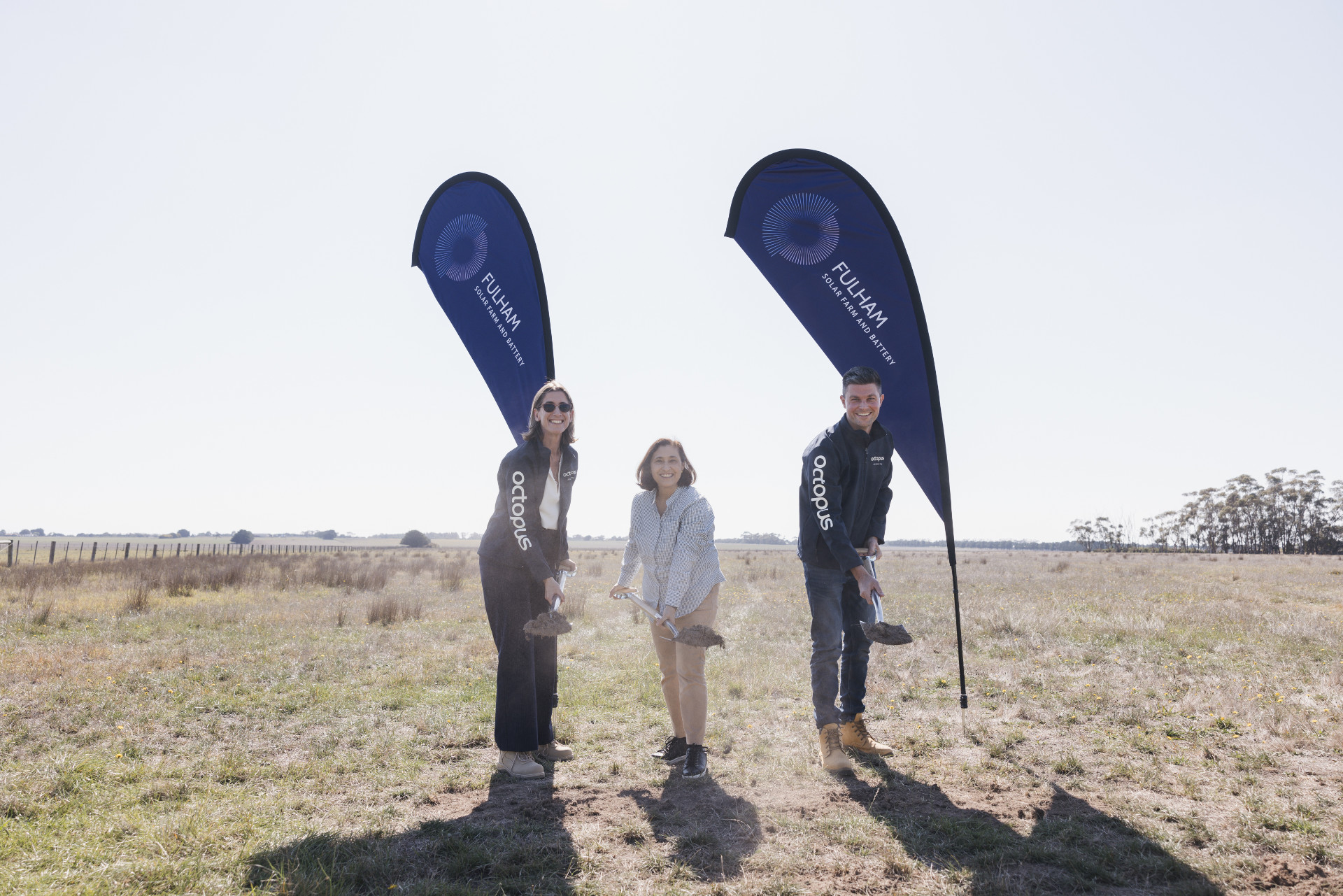From Fulham to Blind Creek: How SMA is Enabling the Next Generation of DC -Coupled Hybrid Projects in Australia

Combining an 80 MWac solar photovoltaics (PV) system with a 64 MW / 128 MWh battery energy storage system (BESS), Fulham Solar Farm in Victoria’s Gippsland region, commenced construction in April 2025, representing a major step forward for PV/BESS hybrid systems in Australia. Fulham will supply reliable clean power to approximately 39,000 homes and set a new benchmark for integrating co-located solar and storage.
Just months after Fulham’s milestone, the Blind Creek Solar and Battery Project in southeast New South Wales has achieved AEMO connection approval, paving the way for construction to begin in 2027. Both projects are being developed by, long term owner, Octopus Australia and showcase the growing market appetite for DC-coupled architecture in Australia’s renewable energy future. With a 300 MW solar farm and 243 MW / 486 MWh DC-coupled BESS, Blind Creek is set to become one of the largest projects of its kind.
At the centre of these milestone projects is SMA Australia, providing the inverter and DC-coupling technology that makes the hybrid architecture possible. Both Fulham and Blind Creek are among the first DC-coupled solar and battery projects to progress through Australia’s onerous connection process under the National Electricity Market (NEM). Together, they highlight SMA’s DC-coupling technological leadership and hybrid integration expertise.
Why DC-Coupling, and Why Now?
Recently, there has been a growing number of use cases that clearly benefit from SMA’s DC-coupled solution, which offers a distinct efficiency advantage over traditional AC-coupled architectures. This is especially true for applications where energy is primarily supplied at night, where a constant power output is required, or where full control over the timing of energy export is essential.
In traditional AC-coupled systems, solar energy is converted from DC to AC through the PV inverters, then again from AC back to DC to charge the batteries, introducing additional stages of conversion and increasing losses. DC-coupled systems allow for charging the batteries directly from the DC power from the PV array and it is only converted into AC for feeding into the grid, therefore offering higher round-trip efficiency. The fewer conversion steps can increase overall energy yield of the system by up to 2%.
The result: higher efficiency, better utilisation of solar yield, and lower balance-of-system costs, especially valuable for sites aiming to maximise asset value under grid export constraints.
SMA’s DC-DC converter technology further allows independent control of battery charging on the DC side, enabling greater design and operational flexibility.
Strength in Both DC and AC Worlds
While Fulham and Blind Creek demonstrate the clear advantages of DC coupling for large-scale hybrid sites, SMA continues to support a full range of AC-coupled, PV-only, and BESS-only projects across the residential, commercial, and utility segments.
Rather than replacing AC-coupled topologies, SMA’s portfolio is built to complement them, offering developers, asset owners, and system operators the flexibility to design for the best solution to meet their technical, commercial and regulatory requirements. Common control platforms, modular designs, and proven grid-forming technology ensure that whatever the architecture, SMA systems are ready for the next generation of grid participation.
A Model of Technical Collaboration
Fulham’s successful grid connection approval in 2024 is no small feat. The process, led by Octopus Australia, involved close collaboration with SMA, AEMO, AusNet, and Wärtsilä over a 12-month period to define and deliver a compliant pathway for DC-coupled connection, aligning with the broader industry push under the Connections Reform Initiative. That coordinated approach helped move Fulham from concept to reality and provides a valuable template for future projects.
At Blind Creek, SMA will once again supply the critical inverter technology alongside partner Wärtsilä. The project, located near Bungendore between Sydney and Canberra, uses an innovative DC-coupled layout with distributed batteries sharing inverters with solar panels, helping deliver more valuable energy to the market during peak pricing periods.
Looking Ahead: Setting the Standard for Hybrid Projects
Fulham is more than a milestone project; it’s a model for how hybrid solar and storage can be deployed at scale in Australia. It is one of the first large-scale project in Australia to demonstrate the technical and economic advantages of DC-coupling, setting a strong precedent for how future solar-plus-storage projects are designed and optimised.
With Blind Creek following closely behind, Australia will have two flagship DC-coupled projects showcasing the value of SMA’s advanced hybrid capabilities. By combining world-class inverter and DC-coupled technology with deep technical and regulatory expertise, SMA has helped chart a path through one of the most complex grid connection environments in the world.
As more developers explore the benefits of hybrid system design, whether DC or AC-coupled, or stand-alone grid-forming battery systems—SMA continues to provide unparalleled flexibility, state-of-the-art technology, and scalable solutions needed to meet complex and evolving technical and regulatory requirements.
From Fulham to Blind Creek and other large-scale projects across the NEM, SMA’s technology is playing a central role in enabling integration of the next generation of clean, efficient, and intelligently integrated renewable energy systems.
About Octopus Australia
Octopus Australia is a renewable energy fund manager and developer harnessing capital and expertise to accelerate the energy transition, with an operating and development portfolio of over $11bn across wind, solar and battery storage. Octopus Australia is more than just an investment manager, we take a data and technology driven approach to constructing an energy portfolio designed for Australia’s clean energy future. Our team of over 55 highly skilled professionals across Melbourne and Sydney, have a unique blend of skills and expertise covering all facets of the renewable energy industry. This allows us to manage projects across their entire lifecycle and create an integrated portfolio of renewable energy and storage assets.

Feel free to contribute!